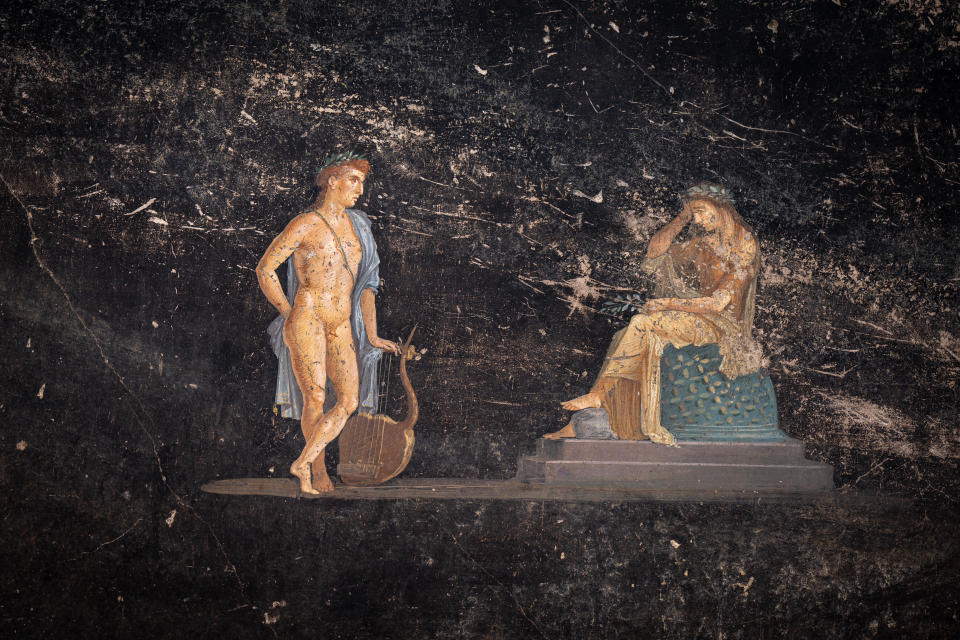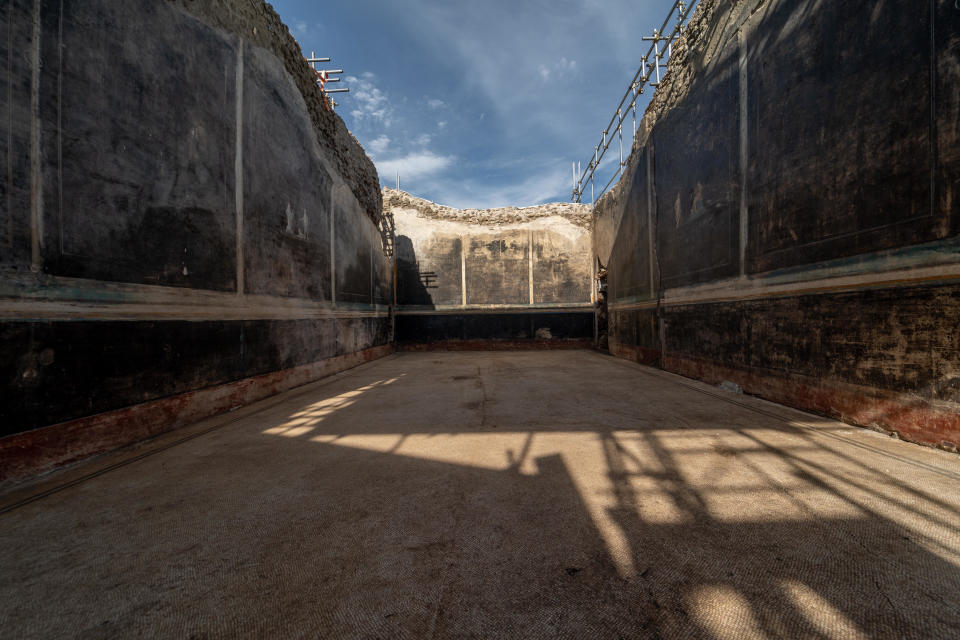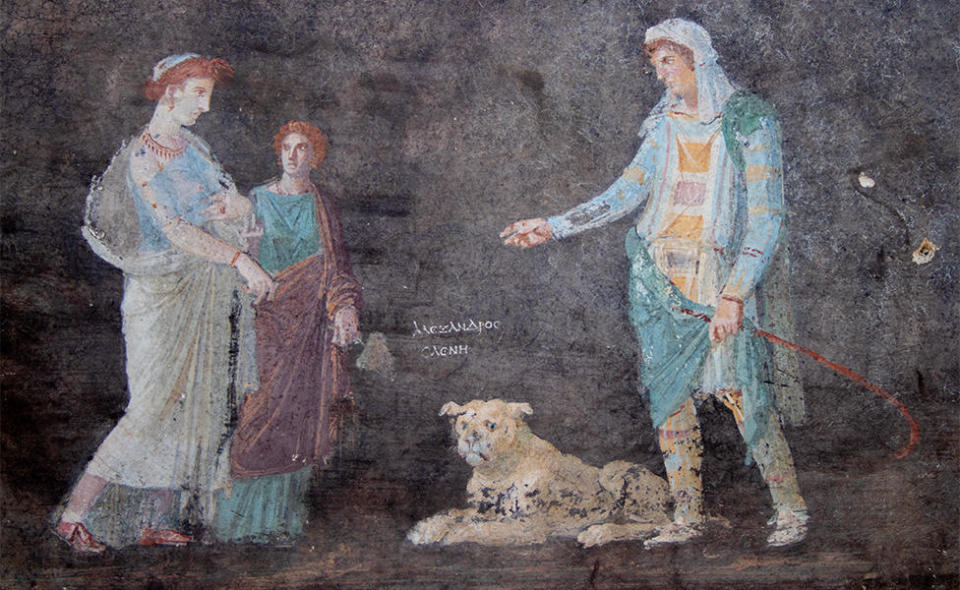Stunning Roman frescoes have been discovered by archaeologists in Pompeii, the ancient city destroyed by a eruption of Mount Vesuvius volcano in the year 79 AD. Experts say the newly discovered frescoes are among the best to ever emerge from the renowned archaeological site.
Artworks line the high walls of what was once a grand banquet hall. The walls themselves were painted mostly black and the figures in the frescoes appear to emerge from the shadows. The site’s director, Dr. Gabriel Zuchtriegel, told CBS News’ sister network BBC News that the dark color was likely used to hide stains from the lamps that illuminated the hallway after the sun went down.
“Under the bright light, the paintings would almost come to life,” Zuchtriegel said.

Two pieces dominate the room; one depicts the Greek god Apollo trying to seduce the priestess Cassandra. The second play shows Prince Paris meeting Helen of Troy.
About a third of the “lost city” of Pompeii remains obscured by volcanic debris from the eruption nearly two millennia ago. As scientists make new discoveries, they quickly move them to storage to protect them from the elements.
The newly discovered frescoes, however, cannot be moved, so they have been protected with temporary coverings. Plaster glue is also being injected into the walls behind the artwork to prevent it from falling.

“We have a passion and a deep love for what we do, because what we are discovering and protecting is for the joy also of the generations that will come after us,” chief restorer Dr. Roberta Prisco told the BBC, adding that the work was very stressful.
The excavation site is much larger than just the banquet hall.
Another fresco recovered from what was once one of Pompeii’s grand estates was on the ceiling, but was destroyed by the eruption that destroyed the city. Archaeologists managed to organize the pieces like a puzzle and recreate landscapes, theatrical masks and Egyptian characters.
“This is my favorite discovery from this dig because it is complex and rare,” Dr. Alessandro Russo, lead co-archaeologist on the dig, told the BBC. “It’s high quality, for a high status individual.”

In a bakery close to the large property, the skeletons of two adults and a child were discovered.
Archaeologists believe they may have been slaves who were trapped and unable to escape the eruption, and were killed by falling rocks.
“When we dig, we ask ourselves what we are seeing,” co-archaeologist Dr. Gennaro Iovino told the BBC. “Just like a theater stage, you have the setting, the backdrop and the culprit, which is Mount Vesuvius. The archaeologist has to be good at filling in the gaps – telling the story of the missing cast, the families and children, of people who are no longer there.”
The team’s discovery was just one in a series of recent revelations from the site, after they found other frescoes with mythological themes in early March and, just a few weeks later, a construction site that was under construction until the eruption.
Archaeologists said near the end of March they found a house construction project that was frozen in time by the eruption, with materials such as bricks and tools still piled up in the home’s reception area.
James and Jennifer Crumbley, parents of Oxford High School shooter, sentenced




































